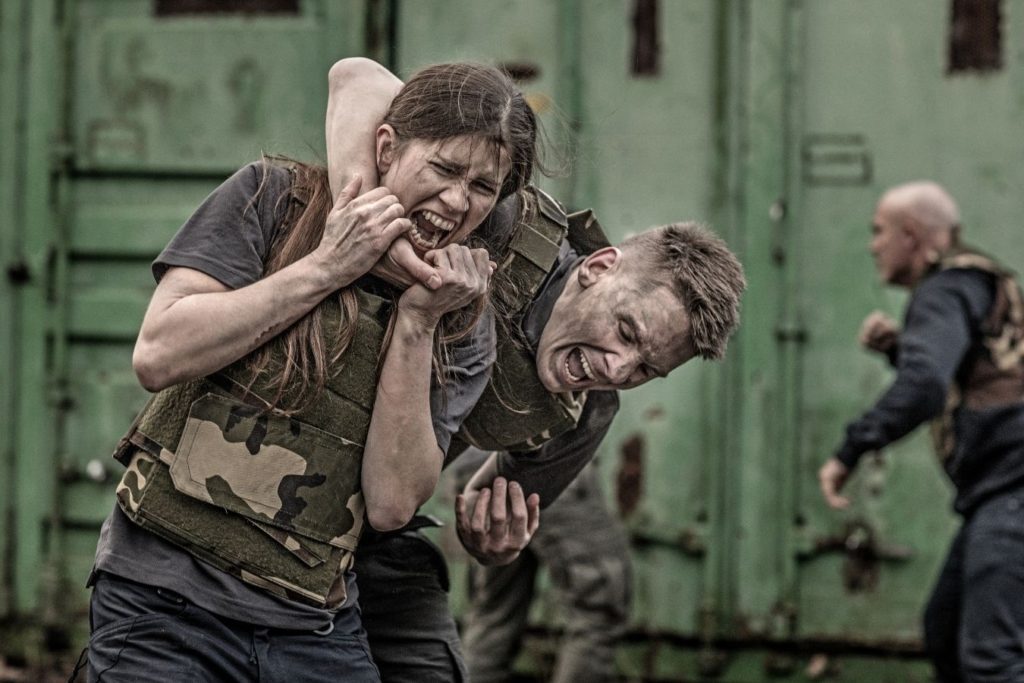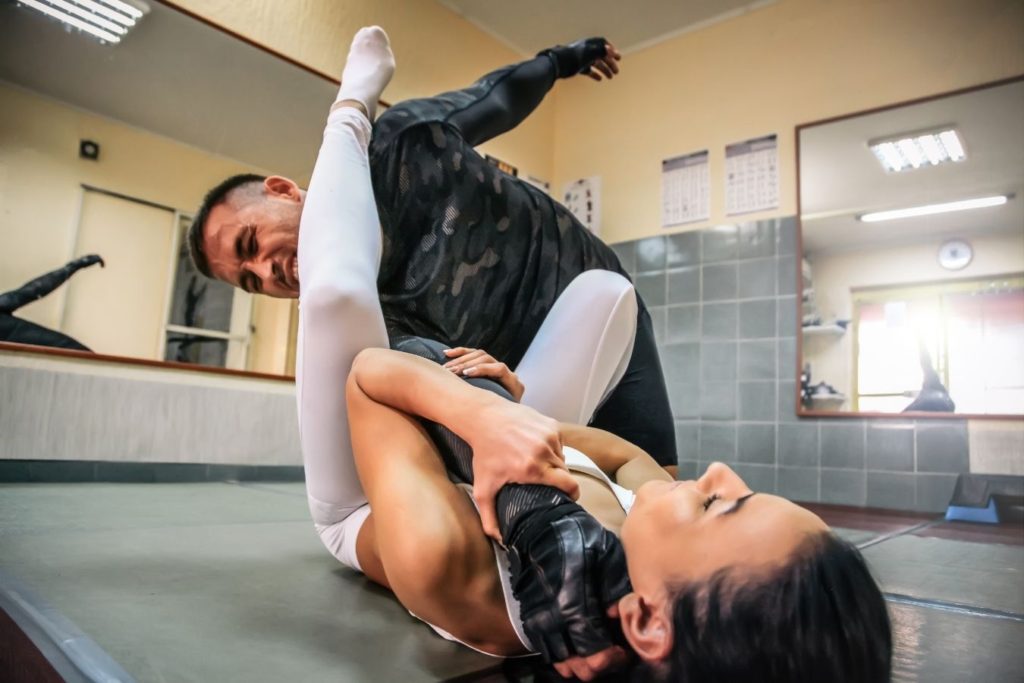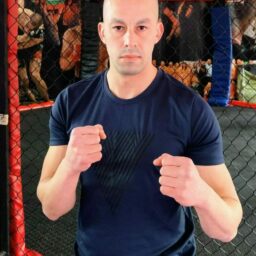People want to have the confidence they can defend themselves in a violent situation, regardless of how safe the place they live is. Many styles and systems claim to teach the best way, but few live up to their promises. Two of the popular systems people pick up to learn how to fight are Krav Maga and BJJ, but which is better?
Krav Maga is a self-defense system with no sports element, while BJJ is a martial art and grappling combat sport. For the most part, jiu-jitsu is better than Krav Maga for self-defense, despite the narrower focus it has because the training methodology results in applicable fighting skills, while in most Krav Maga schools it doesn’t.
For many, this statement may be controversial, but it is well-researched and backed by facts. So, continue reading if you are on the fence about which of the two styles to begin training in or just want to learn why a dedicated self-defense system does not work for the thing it was invented for.
What Is BJJ
Brazilian jiu-jitsu is a grappling martial art and combat sport emphasizing the use of leverage, superior positioning, and submission holds to dominate opponents on the ground.
As the name clearly suggests, BJJ is a Brazilian version of Japanese jiu-jitsu. A judo master (Judo derives from Japanese jiu-jitsu) and a student of Jigoro Kano called Mitsyo Maeda traveled to Brazil in 1914 and soon began teaching students, including the Gracie brothers.
The Gracies were the main people who began modifying the techniques and shifted the focus more to ground fighting instead of the throws.
The style evolved through constant challenges against other styles in Vale Tudo matches, and many elements from catch wrestling were added.
The Gracie family started spreading BJJ in the USA in the 1980s, but the big boom in popularity came after Royce Gracie won three of the first four UFC events and showcased the power of grappling to the world.

How to Dominate Every Fight with Raw, Explosive Power No One Can Match
Discover the underground blueprint that has quietly turned MMA hopefuls into legends, using nothing but sheer, brute force and bulletproof conditioning techniques.
From there on, BJJ has been on a rapid rise in popularity and is today one of the most widely practiced grappling sports.
What Is Krav Maga
Krav Maga is a close combat system initially created for the Israeli military and gradually turned into one of the most popular civilian self-defense systems.
Krav Maga stresses efficiency and aggression and aims to teach people practical skills in the shortest amount of time possible.
Krav Maga translates to “close combat” in Hebrew, and its history dates back to the 1900s. It was developed by Imi Lichtenfeld in Czechoslovakia in the pre-World War II period. Imi was a talented wrestler, gymnast, and boxer who competed at the national and international levels.
His skills transferred to real life, and he used his fighting prowess to help the Jewish community in a time when they were persecuted and attacked by antisemitic groups.
After the end of WWII and the formation of Israel, Imi immigrated and played a pivotal role in the creation of a fighting system for the military.
Gradually, the system designed for lethal use found its way to the civilian population, and the style was adapted to be more suitable for real-life situations and, in time, became very popular across the world.
Key Differences Between BJJ and Krav Maga

There are a couple of important notes to make before comparing the two styles in detail. Both BJJ and Krav Maga are not a single style where everything is the same in all schools. Jiu-jitsu is practiced in three distinct ways: sports BJJ with a gi, sports no-gi jiu-jitsu, and self-defense BJJ.
Krav Maga has a lot more variety, and the differences between different schools can be so great they may seem like completely different styles. This will be a recurring point throughout the article.
Main Focus
Krav Maga is only for self-defense and has no sports element. As such it does not have any limitations imposed by rulesets. BJJ on the other hand is mostly practiced as a sport with no striking allowed and it has a lot of rules.
Mindset
Krav Maga embodies an all-out aggressive mindset. The idea is to incapacitate an opponent as quickly and efficiently as possible by any means necessary, which includes strikes, joint locks, dirty moves, or weapon attacks.
In BJJ the ideal approach is to methodically obtain a dominant position, completely control the opponent, and finally apply a submission to force them to surrender or face serious injury.
Techniques
Brazilian jiu-jitsu specializes in ground fighting, and the majority of techniques are performed on the ground. Positional control is a key concept in BJJ, which means you should always aim to obtain a position from which you can control your opponent, such as mount or back control.
The guards, which are used to control and attack an opponent from your back, are the most unique BJJ element. In most grappling sports, being on your back means you’re losing, but in BJJ, the guard is a dangerous position with numerous offensive options many players prefer.
To finish a fight in BJJ you can use a plethora of submissions ranging from all kinds of joint locks, strangles, chokes and other holds which cause severe comfort or pain enough to elicit a tap.
Krav Maga does not have a specific set of techniques, but rather it uses effective moves from many different styles.
Since it’s a system aimed at real life, there are elements from all areas of fighting, including striking, grappling, and weapons use.
On top of all the typical techniques borrowed from various combat sports, Krav Maga also utilizes „dirty” moves like eye gouging, groin strikes, and everything in the same vein.
Equipment
Traditional BJJ uses a specific uniform called a gi, which consists of a cotton jacket, drawstring pants, and a colored belt. Since there is no striking the only protective equipment you need is a mouthguard.
For no-gi jiu-jitsu, you will only need rash guards, BJJ shorts, and optional spats.
For the most part, Krav Maga does not have a uniform, and practitioners wear comfortable athletic clothes to training.
Depending on the school and the training methodology you will need some protective equipment. Although it can vary a lot, you will probably need at least some of the following items:
- MMA gloves
- Boxing gloves
- Head guard
- MMA shin guards
- Mouthguard
- Groin guard
Training
The training methodology is the most important part of how well Krav Maga performs in real-life fight situations.
Krav Maga is not governed by a single organization, and the term can be used by anyone at their school. This creates a situation in which you can enter different Krav-branded schools and end up in completely different training situations.
For the most part, and in the majority of Krav Maga schools, sparring and drilling against hard resistance are not done.
Students warm up, execute techniques in the air, then hit heavy bags and pads and drill with training partners. The drilling is done with a willing partner, similar to what you see in demonstrations.
In certain Krav Maga gyms, however, pressure testing and sparring are used. Some instructors also employ various scenarios for drilling, like limiting the space, dealing with multiple attackers, unexpected moments of attack, and many, many others.
BJJ more or less follows the same structure, regardless of where you are. A class begins with a warm-up, then the instructor shows techniques that are drilled with a partner, and the class ends with a few rounds of free sparring called rolling. Instead of drills or free sparring, some academies prefer to use more positional sparring games.
Strength and Conditioning
Strength training for BJJ is becoming more important as the sport moves into a professional era. Grappling is a more strength orientated martial art so more time is spent training maximal strength and less on the velocity end of the spectrum.
Krav Maga is a self defense system so being generally strong is recommended. Conditioning for BJJ requires mixed energy system development. As no-gi rulesets become more popular, the ability to repeat high-intensity efforts becomes the main focus for a BJJ practitioner.
Krav Maga doesn’t have any conditioning requirements since there is no competitive landscape. However, having a general base of fitness is important for self-defense.
BJJ vs Krav Maga For Self-Defense

Krav Maga’s entire premise is to be the best self-defense system in existence, so it must be so, right? Well, no. Brazilian jiu-jitsu, in most cases, is better.
For the most part, Krav Maga is actually not good for self-defense. The problem lies with the training. The only way to learn how to fight and be able to apply your skills against a resisting person is to train against resistance.
Without sparring, drills against fully resisting partners, and being punched, kicked, and strangled, you will never be able to react adequately when you are attacked for real.
This is not a theory of mine but a fact backed up by countless hours of video footage from street fights, challenge matches, and MMA.
The vast majority of Krav Maga schools do not use any form of sparring or pressure testing. Many also teach complete nonsense, which against a real knife or gun will get you killed instantly, and since there is no pressure testing, you never understand how useless these techniques are.
As you can see from both of the Krav Maga videos above, the training partners act like dummies and do not react in even a remotely realistic way, and these are perfect representations of what Krav Maga training looks like for the most part.
But it’s not all bad. I’ve seen videos of schools where sparring is real, not only in a sports scenario but also in various real-life scenarios.
There are also good instructors with solid fighting skills from other styles that teach real techniques adapted from combat sports to real life, which is great. But sadly, these schools and academies represent a minor percentage of the whole.
But what about BJJ? There are good and bad things. The positives are that grappling truly enables smaller people to defeat much larger and stronger attackers through their skills. Most fights get in close range, and this is where BJJ excels.
Furthermore, jiu-jitsu is popular among law enforcement and security personnel because you can subdue a person without hurting them.
The drawbacks of BJJ for self-defense are the lack of striking and the minimal focus on throws and takedowns.
Most people train in sports jiu-jitsu, and many of the habits and techniques used there are useless in a real fight, so you need to be well aware of what is effective in the real world and what should only be used in the gym.
Some rare academies also teach self-defense BJJ, which is one of the best skill sets you can acquire if you want to be able to protect yourself and your loved ones.
To summarize in one sentence, which is better for self-defense, Krav Maga or BJJ?
Every experienced BJJ practitioner will have some solid real fighting skills, despite some shortcomings, while the majority of Krav Maga practitioners can’t fight, except those training in schools with the proper training methodology (situational sparring and pressure testing).
BJJ vs Krav Maga For MMA
Krav Maga is not a sport and does not concern itself with competitions, so BJJ is the clear winner in practicality for MMA. Jiu-jitsu is a mandatory part of MMA training, and at least basic skills are a requirement for even beginner practitioners.
Krav Maga does resemble MMA in the way that it incorporates striking and grappling and combines the two. But in most places, the training is not done realistically, and where it is, it’s in scenarios resembling real life, so it’s not exactly good for MMA either.
BJJ vs Krav Maga Which Is Better?

In my opinion, BJJ is much better across the board. Krav Maga has one goal: self-defense, and it sadly often fails even there.
If you are lucky enough to have access to one of the schools with realistic training and your chief concern is self-defense, then it’s a much better choice than the regular BJJ academy. There, you will learn basic striking and grappling techniques and how to use them in real life.
But I would argue that if you really want to learn how to fight, your best option is to join an MMA gym, and after you’ve become decent, you can also attend Krav Maga classes where you can adjust your skills for use in a street situation.
If you want to learn the intricacies of grappling, have the option to compete, learn real fighting skills, and be a part of a growing culture, then BJJ is a much better choice.

